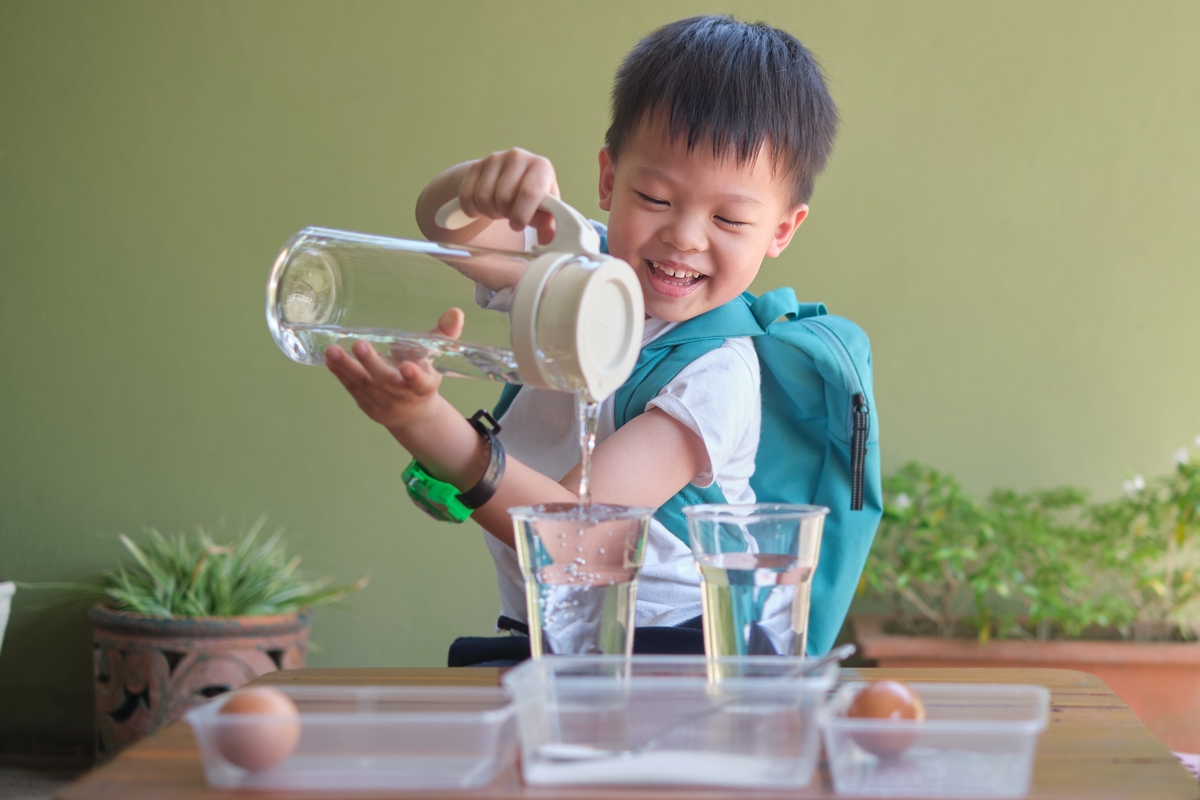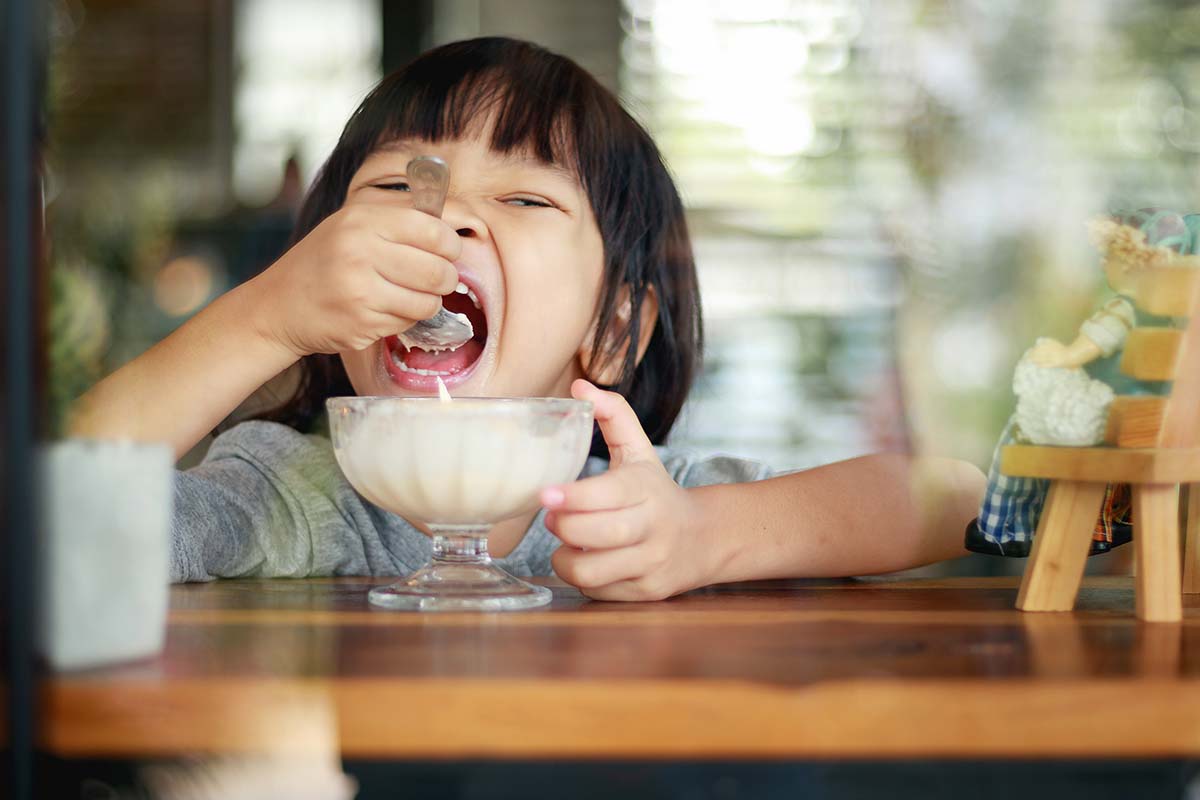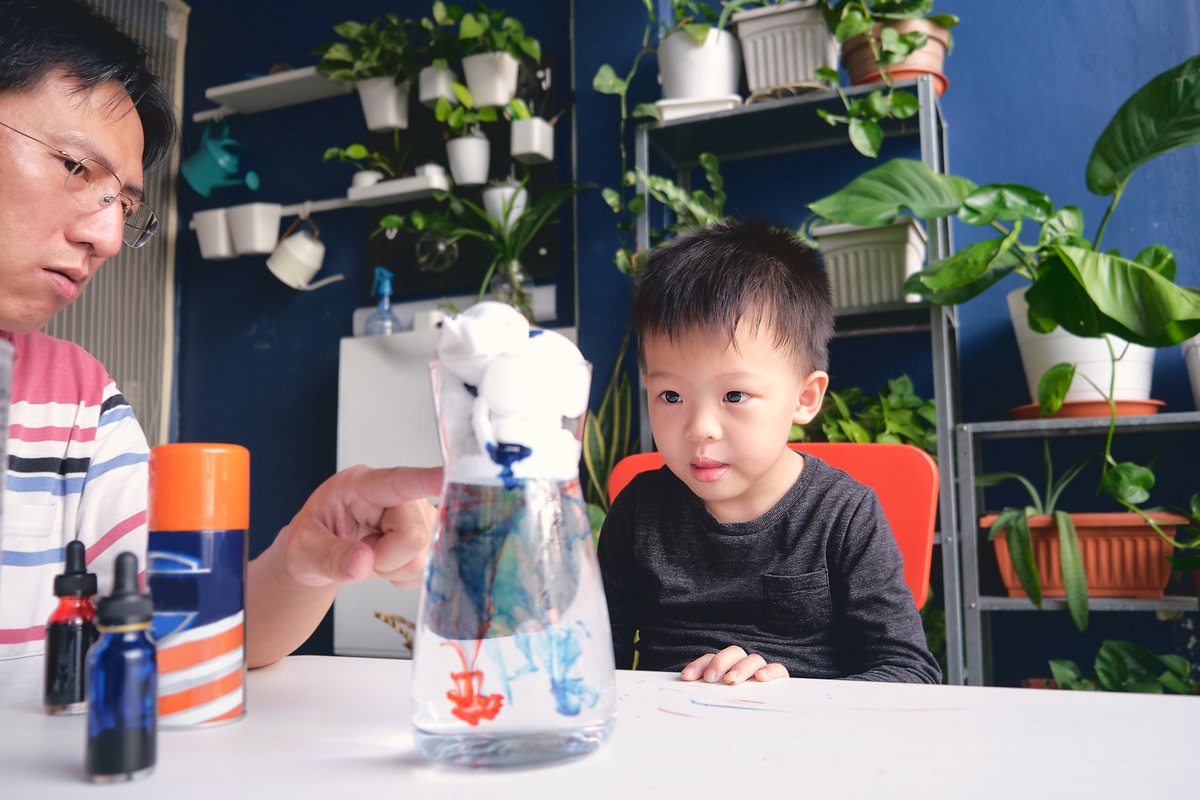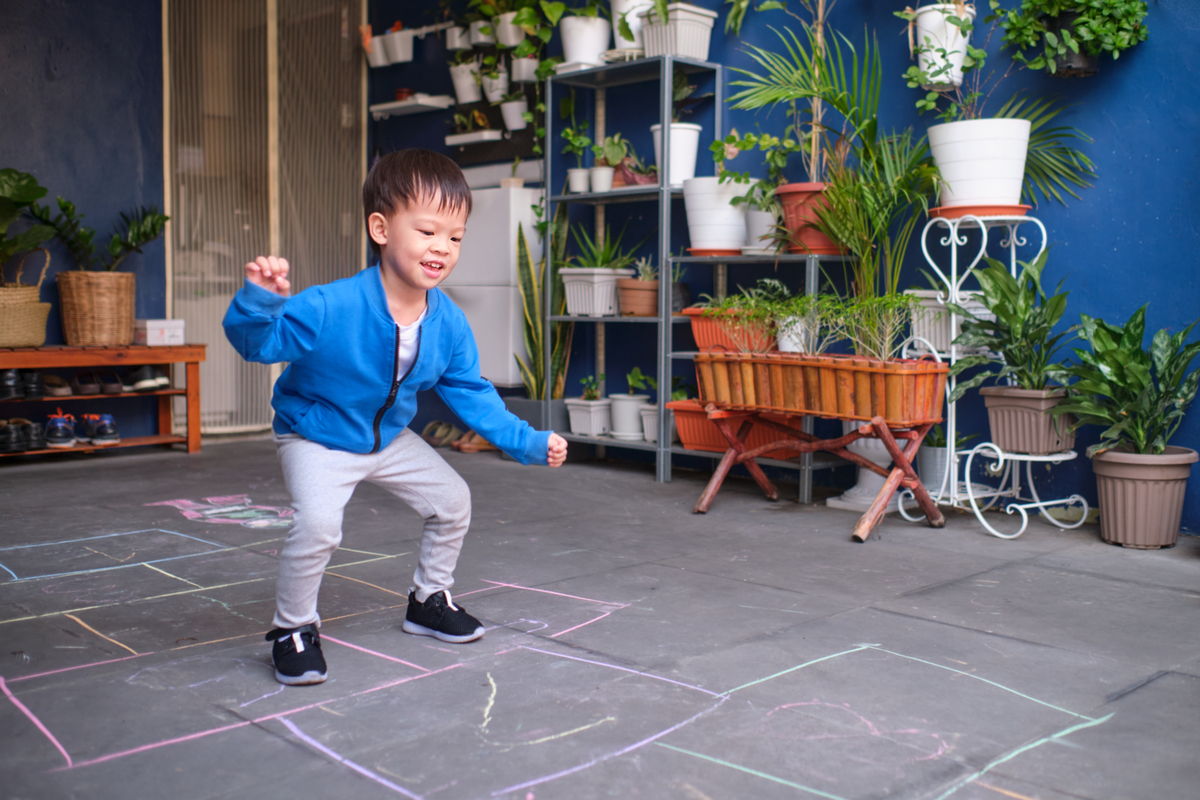
STEM subjects (Science, Technology, Engineering, Math) help build important skills children need for school and in their future careers. STEM classes have the added benefit of improving problem solving, creativity, and adaptability that come with these subjects. Here at Spark Math by Spark Education, we not only excel in putting the “M” in STEM, we know the importance of making STEM part of everyday life. In this new series, we are going to explore some of the most fun, interactive, and educational STEM activities by grade level you can try at home. Check out these fun STEM activities for primary 2 kids!

1) Make Ice Cream Using Math & Science
Looking for a great way to use science that’s educational and delicious? We have the perfect activity! Making ice cream, with science! Making food is always a good way to use measurement and other math skills in a real-world way. Making ice cream is simple with only a few ingredients, some plastic bags, and a little bit of an arm workout. Your child will also get to know how ice cream is made. Let’s use science to make a delicious treat!
What you need:
- Gallon-size plastic zip-top (resealable ie. Ziploc style) bag
- Quart-size plastic zip-top (resealable ie. Ziploc style) bag
- 1/2 cup of half and half
- 1/4 tsp vanilla
- 1 tbsp sugar
- 3-4 cups ice
- 1/3 cup kosher or rock salt
- Gloves or towels (to hold the cold bags)
- Not needed but extra tasty: Sprinkles, caramel, chocolate, or any of your favourite add-ons.
Instructions:
1) Put the ice and salt in the gallon-sized bag.
2) In the quart bag, mix together the half & half, vanilla, and sugar. Make sure the bag is sealed tightly, no one wants a mess!
3) Put the mixture bag into the ice bag and start shaking it up (make sure to wear gloves or hold the bag with a towel. It’s VERY COLD).
4) After 5-10 minutes, check the smaller bag inside and you should have some very creamy and delicious ice cream.
5) Grab a spoon, add some toppings, and eat!
What Happened?
The secret to this experiment is all about the salt and the ice. When making ice cream, you need to keep your mixture cold to give your ice cream a fluffy texture. Adding salt to the ice rapidly lowers the temperature of the ice. This helps to freeze the ice cream mixture quickly, giving you delicious ice cream with that creamy goodness!
This fun and interactive activity is also a great way to teach your child about the melting point for water and how salt lowers the melting point. Math and science concepts like measurements, temperature, and simple chemical reactions are easier to understand when kids see their work in the real world. Try doing the experiment with a few changes to show the importance of each step and ingredient. Does it work as well without the salt? Can you do the same thing with almond milk? With science and math knowledge, plus a little bit of shaking, anything is possible, even dessert.

2) Understanding Weather with a Rain Cloud in a Jar
Weather is one of the most unpredictable aspects of everyday life. Why is the sky blue? What makes clouds so fluffy? Why does it rain? By creating experiences that help answer these questions, children become confident in asking questions and learning all about science.
Weather is also an everyday use of math skills. Knowledge about measuring rainfall quantities, temperature, and probability is an important part of planning a day. Nothing is worse than having to stay indoors during a rainstorm. With this “Rain Cloud in a Jar” activity, kids can learn a little about how clouds work with a fun and colourful experiment.
What you need:
- A clear jar, vase, or cup
- Water
- Shaving cream
- Food colouring
- Dropper (Some food colouring already has a dropper top but if not any clean dropper works. Multiple if you want to do different colors)
- Little bowls (to hold the food colouring if using a dropper)
Instructions:
1) Fill your clean jar (or cup etc.) with water about 3/4 to the top.
2) Fill the top 1/4 of the jar with shaving cream.
3) Start adding drops of food colouring to the top of the shaving cream. Spread the drops around until the shaving cream “cloud” is filled with food colouring and starts “raining” into the water.
What is Happening?
This activity illustrates part of the water cycle and shows how rain falls. The shaving cream acts as a cloud, while the food colouring represents rain. Clouds are made up of water droplets. When water evaporates to form water vapour, the vapour rises into the air and cools down. This causes the water vapour to condense into tiny water droplets that form clouds.
As more and more water droplets combine, the clouds become heavier, just like how the food colouring accumulates in the shaving cream. When the clouds become too heavy, the droplets fall back to the ground as rain. This is similar to how the extra weight of the food colouring falls into the water in the jar, creating a beautiful effect. This activity wonderfully recreates the water cycle and gives your child a visual illustration of the process.
While this is a very simplified explanation of how clouds work, it’s a fun way to introduce kids to how science is part of their everyday life. From the local television weather person to scientists who chase storms trying to learn how they work, understanding the weather is an exciting way to use STEM skills.

3) Number-Line Hopscotch
Hopscotch is a classic game that just needs some chalk and a sidewalk. This game is an fun and physical way to learn about skip counting, while actually skipping! Skip counting is when you count numbers by a specific grouping of numbers, like counting by twos (ie. 2, 4, 6, 8…).
Create boxes and number them from one to ten. They can be in a straight line or in groups next to each other; the important part is that they are in number order. Kids should start by standing outside of the box. Then they can start jumping to spots based on the number you’re counting by. Skip counting is a great introduction to multiplication and division, as it’s a different way to look at numbers and counting.
A hopscotch board is very similar to a number line. Just like any number line, working on simple addition and subtraction, odd or even numbers, and number sense is made easy with this game. The numbers don’t always have to be from one to 10. You can change the numbers to tens and hundreds to work on place value. This is a great activity for children who like to find more active ways to play. This is an energetic way to exercise both the body and the mind.
Build STEM and Math Skills With Spark!
Looking for more fun and interactive STEM activities for every grade? Check out our Spark Education blog for great news and activities the whole family can enjoy. Looking for a weekly online class filled with learning activities, gamified learning, and all led by real experienced math teachers? Sign up to try a free demo class today!
For more in our STEM Activities series:
Pre- K / Kindergarten – Primary 1 – Primary 2 – Primary 3 – Primary 4 – Primary 5




